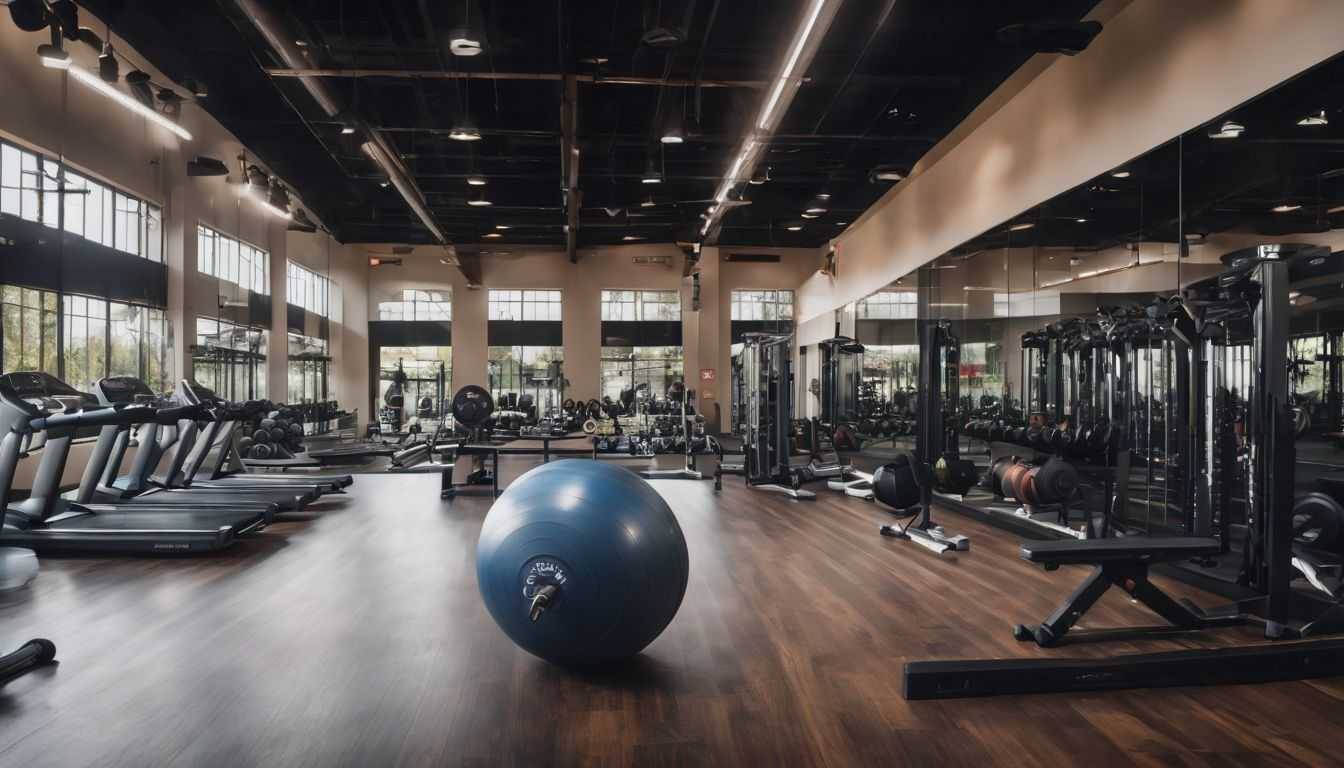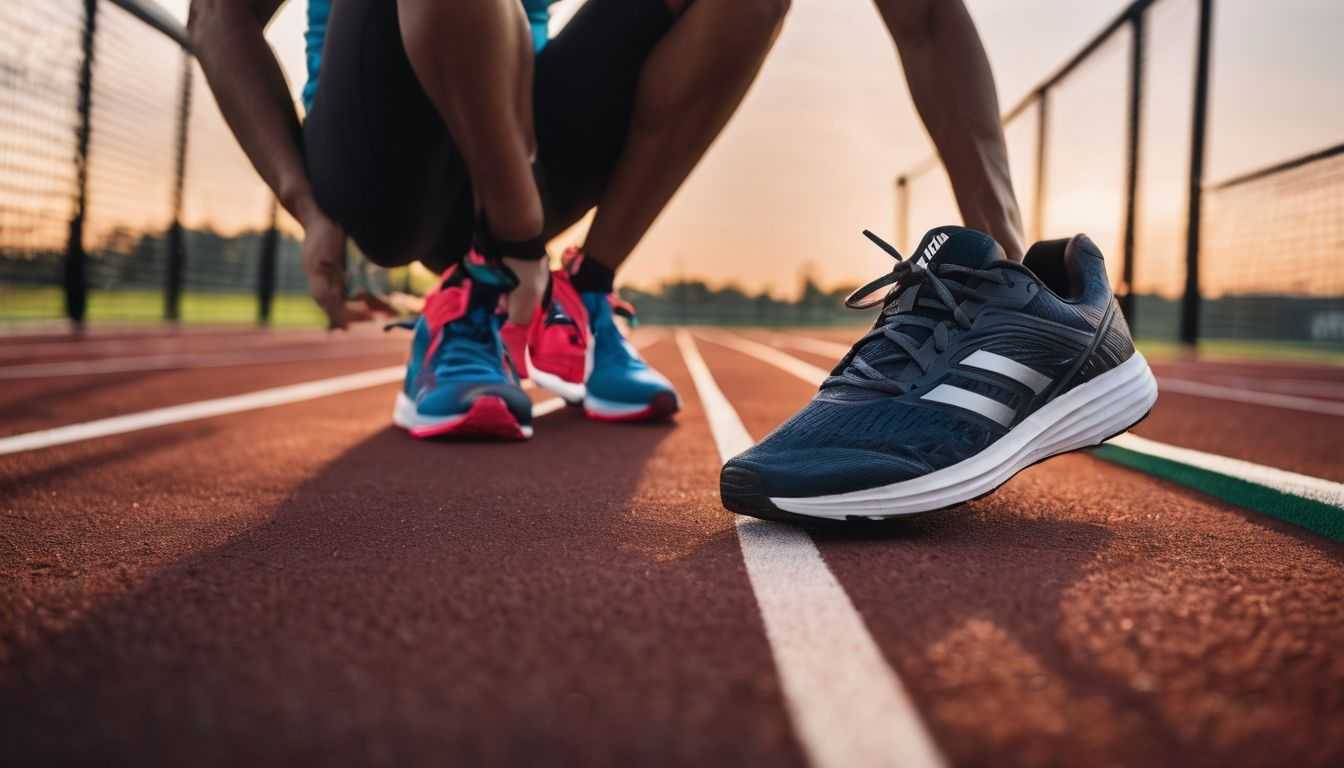We’ve all seen those athletes, diligently warming up before their games. Or perhaps you’re reminded of your high school gym teacher always insisting on a quick pre-run stretch. But have you ever stopped to think why? Warming up is genuinely essential for anyone engaging in physical activity.
It’s not just another tick box moment, it’s the foundation that prepares your body for whatever workout you’re about to tackle and significantly reduces your risk of injury. In this blog post, we’re going on an exciting journey together as we uncover effective warm-up strategies and how they maximize the perks from each sweat session! Ever scratched your head wondering why warming up causes more blood flow or increases body heat? Well, buckle in folks – we’re about to dive deep into the incredible benefits and science behind this fundamental fitness practice!
Key Takeaways
- A warm – up before a workout is important. It raises body heat and makes muscles ready for exercise.
- Warm – ups have many benefits. They help the heart pump more blood, get our brains ready, and reduce chances of injury.
- To warm up well, do exercises like squats, planks or side lunges. Start light then add stretches.
- The time needed to warm up depends on your workout plan. Aim for 5 to 10 minutes minimum each time.
Importance of Warming Up Before a Workout
Warming up before a workout is very important. Why? It gets your muscles ready to move. Without a warm-up, your muscles might get hurt when you start to exercise. Your body needs time to change from rest mode to work mode.
Let’s think about it like driving a car in cold weather. If you try to drive too fast without warming it up first, it won’t run as well and may even break down. Our bodies are the same way! Just like cold cars, our bodies need time for the blood flow and oxygen delivery to improve so that they can work their best.
A good warm-up will raise your body temperature and make sure blood is flowing right where it needs to go – to your muscles! When your blood flows better, more oxygen reaches the muscle cells which helps them work harder during workouts.
Doing this also makes nerve signals (the messages our brains send) travel faster, making us react quicker if needed.
So next time don’t skip the warm-ups before any physical activity or sport-specific activities such as cardio workout or strength training or anything else! Make sure you spend some minutes doing light aerobic exercises like walking or jogging as part of an effective warmup routine with benefits not only limited towards increasing flexibility but also maximizing performance – setting yourself up for success throughout whatever comes after in each session!
Benefits of a Proper Warm Up

We can’t overstate the numerous benefits of a proper warm-up. It effectively raises your body temperature, readying your joints and muscles for action. A good warm-up also helps increase blood flow and oxygen delivery to your working muscles.
Not forgetting that it prepares you mentally for the workout ahead, boosting your focus and performance. More so, warming up enhances our bodies’ resilience against injuries by improving flexibility and reducing muscle tension or pain.
Increase Body Temperature
Warm-ups help us raise our body heat. This is good for our muscles. Warm muscles move better and are less likely to get hurt. When we do an easy exercise like walking or jogging, it raises our heart rate slowly.
This brings more blood to the muscles and makes them warm-up before a big workout.
A light sweat or healthy glow tells us that we have raised our body temperature enough and are ready for harder exercises. A warmer body can move faster and better because nerve signals travel at a quicker pace too.
So, let’s never forget to warm up and increase our body temperature before each workout!
Increase Blood Flow and Oxygen Delivery
A good warm-up gets our hearts pumping. It makes blood move faster in our bodies. More oxygen goes to our muscles. This helps us work out better and stay strong during exercise. A quick walk or light jog is a great way to start.
We can also do jumping jacks, high knees, or pedal on a bike for a few minutes. These activities make our hearts beat faster and help boost blood flow.
Mental Preparation
Getting ready for a workout is more than just physical. Our brains play a big role too. A warm-up helps our minds get set for the exercise ahead. It raises heart rate and gets blood flowing.
We also feel our body heat go up. This signals to our brain that it’s time to focus on what we’re about to do. Dynamic stretches can help here as well, making us aware of each muscle group we will use during the workout.
Warming up also makes nerve receptors more sensitive and improves the mind-muscle link in our bodies. This gives us greater control over how we move during exercise while boosting mental alertness from start to finish.
There’s one last thing about warming up that aids mental prep – it could lower injury risk, although this isn’t fully proven yet scientifically speaking, it does give peace of mind knowing that you are taking care of your body before jumping into an intense session! So remember not only to prepare your body but also give time for your brain to adjust and be ready before starting a fitness routine!
Injury Resilience
We all want to stay fit and avoid getting hurt. A good warm-up before exercise helps with this. It boosts blood flow to our muscles and makes our bodies warmer. This preps us for the workout ahead and builds injury resilience.
With a full warm-up routine, which includes both light cardio and stretching, we lessen the chance of muscle tears or sprains during a workout session. Hence, warming up keeps us safe from harm while making sure we get the most out of our workouts.
Effective Warm-Up Exercises

To properly warm up your body before a workout, consider including these effective exercises: squats for activating glutes and quads, planks to engage the core muscles, side lunges for improved balance and flexibility, push-ups for upper body strength, triceps warm-up to increase arm muscle mobility, and jogging leg lifts to kick-start cardiovascular activity.
These exercises not only prepare your body physically but also mentally while reducing the risk of injury during workouts.
Squats
Let’s try squats. Squats work on the lower body. They help your quads, hamstrings, and glutes get ready for the workout. We can change how hard they are by moving more or less. They also make our legs move better and become stretchy.
More blood goes to our muscles when we do squats which is good for them too! Here’s how to do it: Stand straight with feet hip-width apart. Bend knees like sitting in a chair while keeping chest up, then stand again.
This is one squat! Aim to do 10-15 of these before your main workout.
Planks
Planks are a great way to wake up your body before a workout. They help get your blood rushing and warm up your muscles. To do a plank, first, lay down flat on the floor face-first.
Then push yourself up onto your elbows and toes. Make sure you keep your back straight and don’t let your bottom stick out or drop down! It might feel hard at first but try to hold it for as long as you can, even if it’s only for a few seconds at first.
Do this every day and each time try to hold it for longer than the last time! This is good because planks make our core muscles work really hard which helps with balance and posture.
Side Lunges
Side lunges are a great move for your warm-up. They work your lower body, including legs, glutes, and hips. This makes your muscles strong! When you do side lunges, it also helps with range of motion and flexibility.
The core muscles start to work which helps keep balance.
Here’s how to do it: Stand straight with feet hip-width apart. Step out wide to the right with right foot. Bend the right knee while pushing hips back into a lunge. Keep left leg straight but not locked tight.
Push back up to starting spot using right heel strength. Now switch sides!
You can change this exercise by how deep you go into the lunge – small changes make big difference! When done before a workout these moves will help blood flow better and give good pre-workout stretches.
Pushups
Pushups are a great way to warm up your body before a workout. They help raise the body heat and get blood moving in the muscles. To do pushups, first lie down flat on your stomach.
Place your hands on the floor next to your shoulders, palms down. Now, push your body off the ground with your hands till only toes touch the floor. Keep a straight line from head to toe and hold for a second.
Next, lower back down until you’re almost touching the floor but not quite.
Do this 10 times if you can without stopping or getting too tired. If it feels too hard at first, lower onto knees instead of toes or try doing them against a wall standing up.
Stand away from wall enough so that when arms bend into pushup stance they make right angles at elbows.
Over time as strength builds up you’ll be able to do more each time before feeling tired! Enjoy how good warming up makes workouts feel easier and safe while keeping injury risks low.
Triceps Warmup
Let’s talk about triceps warmup. It keeps your arms strong for the workout. First, stand tall and keep feet hip-width apart. Hold one arm up above your head. Then, bend it down at your elbow so that your hand is at the back of your neck.
Use your other hand to hold this elbow and gently push it down more for a deeper stretch. Keep this pose for 30 seconds and then switch arms do again with the other side arm. This move helps to loosen up the muscles in our upper body part before we start any weight lifting or strength training.
Jogging Leg Lifts
Jogging leg lifts are a great way to warm up before a workout. You start by jogging in place. As you jog, lift your knees high towards your chest. This move gets our heart pumping fast and raises body heat.
It sends more blood to our muscles too, which helps us move better and cuts down on hurt risks. Jogging leg lifts also add stretch that readies us for the main exercise ahead of time.
By doing this as part of our warm-up routine, we set ourselves up for a safe and strong workout session!
How Long Should a Warm-Up Be?
The time for a warm-up can change. It depends on what you do and how long your workout will be. Here are some good rules to follow:.
– If you plan to do light exercise, spend at least five minutes warming up.
– Want to pump up the pace? You should warm-up for ten minutes or more.
– After the light cardio is done, take three to five minutes for dynamic stretches.
Remember these points when planning your own warmup routine. They may help make sure that each part of your body gets ready for action. Plus, it might prevent injury!
Conclusion

You now know how to warm up before a workout. A good warm-up gets your blood pumping and muscles ready. It keeps you safe from harm. Start with light moves, then add in some fun stretches.
This will set you up for a great workout!
FAQs
1. Why should I warm up before exercising?
Warming up before exercise increases blood flow to muscles and raises body temperature, which can improve performance and decrease the risk of injury.
2. What are some ways to warm up before a workout?
To start a workout, you may try aerobic warm ups like jumping rope or pedaling on a bike. You could also do low-intensity exercises such as stretching warm-ups including arm circles, shoulder rolls or walking lunges.
3. Can warming up help me if I’m starting to lift weights?
Yes! Warming up is vital for strength workouts like weightlifting, it preps your muscles and joints for movement, helping lower the risk of injury while improving overall performance.
4. Does it matter how long I take to warm-up before an exercise routine?
The right length for your warmup depends on your exercise mode and health conditions; but generally 10-15 minutes can provide increased flexibility, better range of motion and more oxygen for muscles.
5. Is there a benefit in using fitness trackers during my warm-up routine?
Yes! Fitness trackers can help monitor short time workouts during active recovery stages ensuring that you stay within safe limits according to any medical condition or health concern you have.
6. How can I make sure that my particular sport benefits from my warm-up?
Sport-specific warm-ups might include focusing on core strength with a forearm plank if you’re into Pilates or doing side planks with dumbbells if lifting weights is part of the team sport you play.
